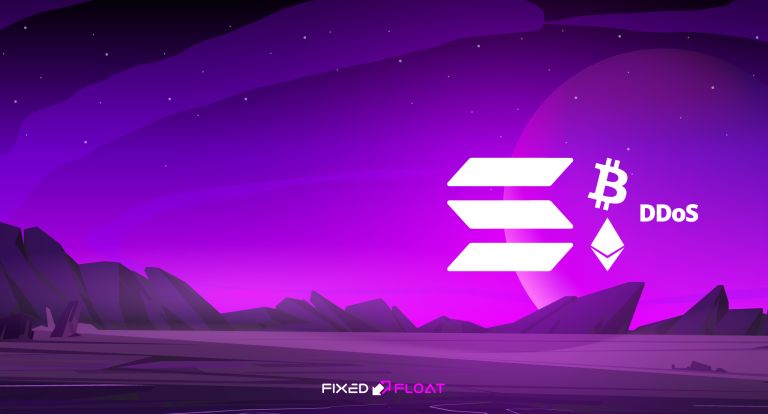When creating an order for FixedFloat, you can see the total amount including all fees. Comparing FixedFloat rates, many clients notice that the total amount may differ from 0.5% in a floating rate and from 1% in a fixed rate. And for small amounts, the difference between the amount sent and the amount received can reach 10-20%. Why is this happening? What fees are included in the final rate FixedFloat? You will find detailed answers in this article.
What fees are included in the FixedFloat exchange rate?
The exchange rate includes 3 fees:
- FixedFloat fee — 0.5% or 1% depending on the selected rate. This is the profit that our service receives for making an exchange.
The fixed rate freezes the rate for 10 minutes and is 1% of the amount. You will receive exactly as much cryptocurrency as you see on the screen when creating an exchange.
The floating rate is 0.5% of the amount. The exchange rate will finally be established when your transaction receives the required number of confirmations from the blockchain network. - Miner fee for a sent transaction is a fee for miners to process a transaction. The fee is provided for performing any actions: transferring funds, performing functions provided for by smart contracts, transferring tokens. The payout is credited to the miner who first created the block.
- Consolidation fee for an accepted transaction.
Consolidation is the consolidation of funds at one address. This is done to reduce the fee on subsequent transactions. For example, on the Bitcoin network, a fee is charged for 1 entry, and on the Ethereum network, a fee is charged for re-sending funds to the main address. You can read more in our article What is consolidation?.
Multiple spending at consolidation
Different addresses are used to identify payments for Ethereum and its tokens. To send an ETH token, you need to have ETH on the address. When sending a token, it is almost impossible to calculate in advance the amount of ETH that will be needed to send a transaction. In addition, it is necessary to have a reserve to increase the fee in case of increased network load.
Let's look at the consolidation of an ETH token using an example.
The client sent 100 USDT to our wallet. In order to withdraw a token to the main address, need:
- To send the required amount of ETH to cover all fees to the same address to which USDT was received. At the time of this writing, the Miner fee is 50 cents.
- To send USDT to the main address using ETH to pay Miner fee — no more than $1.5.
- To return the rest of ETH to the main address, again paying the Miner fee — 50 cents. All coins are transferred to the main address, since it is from there that payments are made to customers.
In total, it will cost approximately $2.5 to send USDT to the main address. The fee amount is calculated at the current rate: ETH — $400, Gas — 60 Gwei.
Exchage rate for small exchange amounts
It can be extremely unprofitable to change small amounts. Especially Bitcoin and Ethereum, which have high network fees. The final amount can be very disappointing for you.
Let's take an example of exchanging USDT for BTC in the amount of $20 during an average load period both on the Bitcoin network and on the Ethereum network.
- FixedFloat fee at float rate is 10 cents
- Miner fee in the BTC network — $3
- Consolidation fee of ETH — about $2.5
As you can see, as much as 27.5% of the amount will go to pay the fee. If, for example, USDT is exchanged for BTC in the amount of $200, the fee for miners will be 2.75% of the amount, and with $1000 already 0.55%. It follows from this that it is much more profitable in this direction to carry out exchanges with larger amounts.










